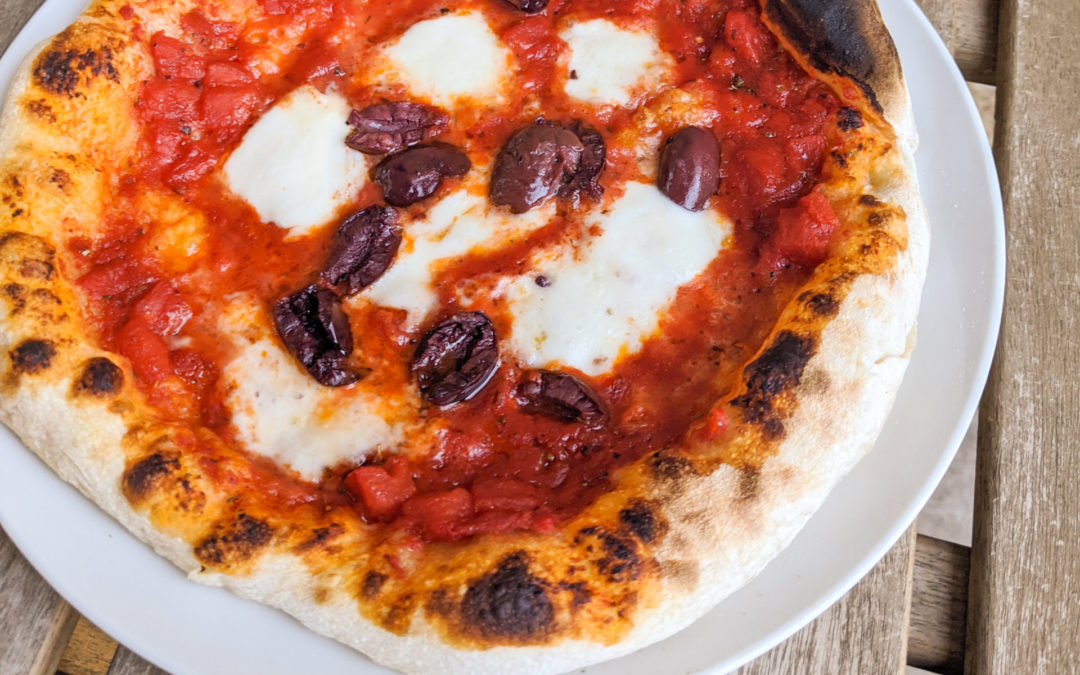A real Pizza Napoletana is very hard to replicate at home. A wood-fired oven is essential and I recommend to use a pizza flour that has the right elasticity.
Ingredients
- 500 g pizza flour (100%) – I use Caputo Pizzeria
- 315 g water (63%)
- 90 g liquid natural yeast (18%) *you can do 15% in Summer
- 25 g extravergin olive oil (5%)
- 12.5 g salt (2.5%)
- 6 g diastatic malt (powder) (1.2%)
Kneading
In a bowl, combine yeast, flour, and diastatic malt. Start kneading by adding the water. If using a standing mixer, start first with the K attachment and after all the water is incorporated move to the hook attachment. Add the extravergin olive oil and lastly add the salt. When gluten is developed, the dough should look smooth and not sticky. Don’t overwork. You can stop a little earlier as the dough will become smoother during fermentation.
First fermentation – ‘puntata’
Let the dough rest at room temperature in a lightly oiled bowl for about 30 minutes. Pizza dough doesn’t need folds, I usually just give a round of folds in the bowl. Cover the dough with plastic wrap and keep it in the fridge overnight.
Second fermentation – ‘apretto’
Transfer to a floured counter and degas the dough gently. Divide the dough in 4 balls and let them rest in a floured big plastic container if possible. Keep it covered. The second fermentation is particularly important and can last 4 to 6 hours.
Shaping Baking
Shaping is not trivial. Take one of the balls and put it on a nice little mountain of flour on your counter. Press on the center of the ball with your floured finger tips and then flip the disc and start to push the air to the sides and enlarging the disc till your desire shape. Before cooking you should remove the flour with the so called ‘schiaffo’, slapping the disc on a side of the counter with no flour. If you have a wood-fired pizza oven… well, good for you! Put all the ingredients onto the pizza and cook for just a couple of minutes keeping a close eye to it. For those less lucky, I get really excellent results with a flat cast iron skillet and the broil funtion of the regular oven. Preheat the skillet on your stove with medium heat (don’t use high heat, the pizza will burn and stick to the skillet). Transfer the disc of dough on the skillet and use your fingers to quickly fix the shape. Pour a couple of laddles of tomato sauce prepared in advance. After a couple of minutes, check the pizza underneath, it should be brown. Put the rest of the toppings and transfer the skillet in the oven with the broil function. Place it as close as possible to the broil. Keep an eye on the pizza, 90-120 seconds should be enough. Take it out and devour!
Notes
- The diastatic malt helps with the brown color, leave it out if don’t have it.
- Traditional pizza napoletana does not call for oil in the dough, but it helps in domestic setting and gives crunchiness to the crust, especially if you don’t have a professional wood-fired oven.


